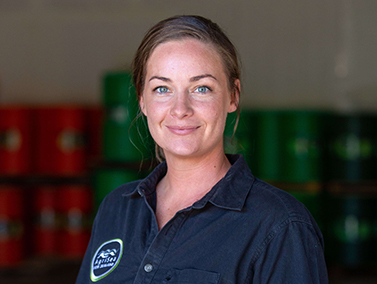The Rere ki uta rere ki tai research project is making great strides in investigating how farmers can work alongside science practitioners to unlock methods to revitalise Aotearoa's soil health, says AgriSea's chief executive officer Clare Bradley.

Soil is a living, breathing ecosystem that feeds everything on the planet, it is our third largest carbon sink and underpins New Zealand's GDP.
Our Rere ki uta rere ki tai pilot project seeks to understand our connection with soils in Aotearoa New Zealand’s farming systems on multiple levels.
The Rere ki uta rere ki tai project is led by AgriSea, an intergenerational Māori agribusiness, as part of the Revitalise Te Taiao research programme funded by Our Land and Water (Toitū te Whenua, Toiora te Wai).
Our Land and Water (Toitū te Whenua, Toiora te Wai) is one of 11 National Science Challenges that focus on defined issues of national importance identified by the New Zealand public.
The challenge is to see that all New Zealanders are proud of our genuinely healthy land and water, and New Zealand is world-renowned for its sustainable food and fibre production.
To bring this vision to life, we need ways of thinking and interacting with land and water that are fundamentally different from the conventional methods today.
This transition needs to happen quickly, with science, industry and communities working together for change. This collaborative mindset aligns with the outlook of Fit for a Better World.
Reducing soil to its chemical and physical aspects leads farmers to make decisions with large chunks of information missing, yet this is what we have been doing in Aotearoa for far too long.
We know the impact that our practices have had on Te Taiao, yet we constantly hear that there is “not enough science” to support change.
In farming, soils are readily described by their physical and chemical characteristics of “soil quality” which is related to its intended use. Regional councils routinely monitor soil quality indicators such as Olsen phosphorus, total nitrogen and microporosity. However, the biological indicators – the life in the soils – are not monitored directly.
Most standard soil tests are down to a depth of only 75mm or less, and visual soil assessments that help to assess the life within the soil are not routine. Monoculture ryegrass is the dominant pasture in New Zealand, with reliance on ever-increasing synthetic inputs to maintain growth. This is impacting the microbial diversity and mauri of the soil, and it is locking our farmers into unsustainable costs.
The idea that we must rely on ever increasing fertiliser, pesticides, and insecticides to grow food is at odds with a Te Ao Māori view of oneone (soil), where soil health, function, and Mauri (life force) is connected to the health and wellbeing of our wider ecosystems including the health of our air, water, plants, animals, and all of us.
Rere ki uta rere ki tai is learning alongside diverse farms – 10 throughout the Waikato and Bay of Plenty – and has already identified gains from grazing techniques, plant diversity, reduction of fertilisers and inclusion of circular coastal nutrients through rimurimu / seaweed and fish waste on animal health.
Studies have shown how seaweed can benefit soil health not only through reduced input of chemicals, but through animal wellbeing, with AgriSea’s Fortress+ supplement for dairy cows found to increase total antioxidant levels, reduce oxidative and physiological stress in grazing animals particularly in the lead up to calving, enhancing hedonic and eudemonic wellbeing.
At Lincoln University’s Research Farm, Professor Pablo Gregorini and his team are part of the Rere ki uta rere ki tai project, collecting data on soil, pasture profiling and metabolome analysis from blood and rumen of lamb-ewe pairs fed on AgriSea biostimulants vs conventional treatments and rye grass vs diverse pasture treatments.
The trial is measuring the soil health profile and growth of the pasture where the lambs were grazed, for biological activity, carbon sequestration, soil fertility and nutrient availability, organic carbon, and hot-water extractable carbon.
It compared the live weights of the ewes and lamb pairs fortnightly in conventional versus biostimulant treated pasture, from lambing to weaning, and then until the lambs were six-month-old, finding greater weight gain in diverse pasture. Results are due to be announced soon.
We’ve gathered a financial baseline to understand how changes made on these 10 farms translates to positive financial outcomes, if any, through reduced operational costs, and how this correlates to milk solid production.
Change requires collaboration on common goals. Our farmers are working alongside science practitioners – western and Māori science – and have identified some of the practices that they use to show respect for soil. The farmers highlighted:
- Cows avoiding winter wet soils
- Cultivation that suits the farm
- Keeping cover crops, diverse pasture, and planting trees
- Protecting soil life including earth worms through minimal tillage
- Appropriate fertiliser usage rather than excess
- Introduction of biostimulants to help soil function
- Understanding what is required to support soil life and self-determination in decision-making
With Rere ki uta rere ki tai, farmers are sharing and discovering ways to care for their land and protect their sustainable long term farming legacy.
Keep up to date with this project on:
